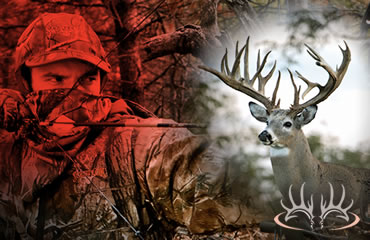Every hunter seems to have a buck fever story. Who hasn’t developed a good case of the shakes at some point in their career?
This usually happens to newbie hunters, but it often affects old timers, too.
I’ve discovered something about controlling buck fever I’d like to share with Buckmasters fans.
Once I’ve spotted a deer and determined it’s an animal I’m going to take, the adrenaline usually kicks in and I find myself susceptible to buck fever — especially if the deer is carrying a nice rack.
That’s why I’ve trained myself to look AHEAD of the animal and get my mind on its path, not its headgear.
By thinking about the upcoming shot window, I have diverted my attention from the animal. The focus has now turned to making a good shot.
I’ve found watching the path is calming to the nerves, where watching the deer has the opposite effect.
Remember: Control the fever; look past the deer.
– Editor’s Note by Tim H. Martin
Adrenaline is the hunter’s enemy — I learned that early in my career. One of the biggest challenges we face as hunters is to learn to control our nerves at the moment of truth.
I’d like to expound on the above tip with my own method of controlling buck fever.
I have a two-part routine for settling my nerves once an animal appears that I want to shoot, whether it’s a wildebeest or a whitetail.
Breathing is of utmost importance in keeping calm. Immediately upon making the decision to shoot an animal, I take slow, deep breaths, holding them in several seconds and exhaling s-l-o-w-l-y. Until my arrow has been released or my trigger finger has done its job, I continue to be conscious of my breathing.
The second part to keeping calm involves diverting my focus from the target or its personal value to me.
Staring at antlers is the worst thing you can do. I’ve known hunters who have shot deer square in the rack. That tells you what they were looking at.
Don’t laugh, but here’s my cure for that. I simply find a leaf, or pinecone, or some nearby object and stare at it, keeping the trophy in my periphery.
Deer almost always give us time to get nervous before a shot, especially when bowhunting. They are usually grazing slowly into range.
Staring at a leaf, like Frank Ridings’ tip about watching the path, diverts my focus from the trophy and allows me to remain as calm as possible.
This works well for non-whitetail trophies as well. I have used this tactic on bear, elk and even African game.
One example comes to mind when I was bowhunting for giant African waterbuck in South Africa.
An elk-sized waterbuck bull with 30-inch horns (that’s a trophy) appeared on the horizon and slowly approached the waterhole in front of my blind. My heart jumped into my throat!
As it took its sweet time crossing the plains from 200 yards away, my hands started shaking, and my breathing became erratic. I knew I had to get my waterbuck fever under control — NOW.
Then, I remembered the tried and true method of breathing and leaf-staring I’d used on so many whitetails throughout the years. I began to inhale and exhale slowly, over and over again.
The old bull was wary of the blind, and it took more than an hour for it to make its way to the waterhole.
I stopped looking at its massive horns and began to stare at a little spotted gecko sleeping at the edge of the blind’s shooting window. In my peripheral vision, I kept loose tabs on what would be the greatest trophy of my hunting career while focusing on the lizard. My shaking stopped.
When the bull finally lowered its head to drink at 30 yards, I re-focused my full attention on the animal and settled my 30-yard pin on the sweet spot just behind its front shoulder. I took one more deep breath, let half of it out and touched off an arrow. The shot was perfect and the waterbuck expired after running only 60 yards, and in less than 30 seconds.
My breathing and re-focusing routine for curing whitetail buck fever worked like a charm on a MUCH larger animal, and on the other side of the world!
– Photo Courtesy of Tim H. Martin
Read Recent Tip of the Week:
• For Luck or For Fun, Name Your Gun: Do you believe in luck when it comes to hunting success? Here’s an old hunting and military tradition to consider — for luck or for fun.




.png)